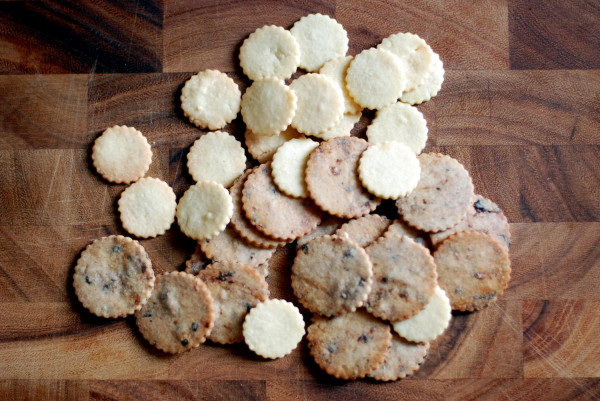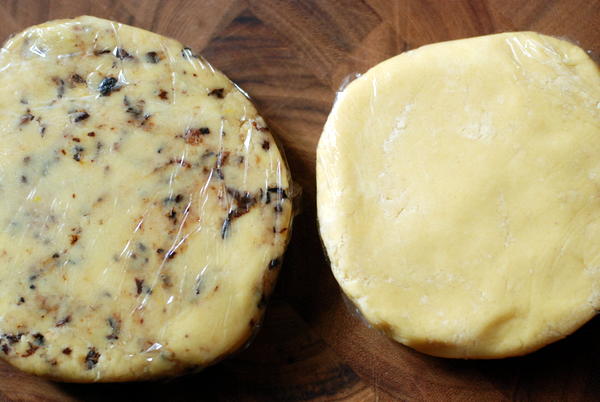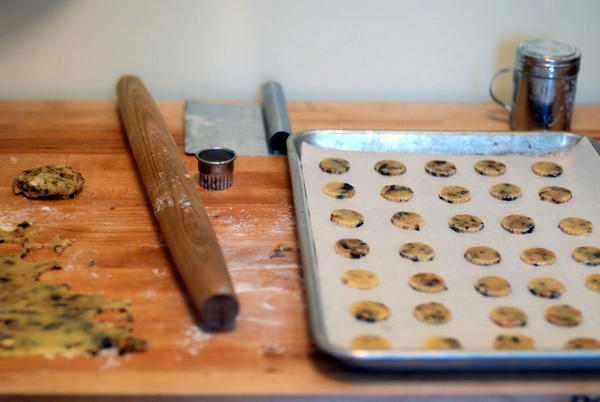Somewhat embarrassingly, D and I have a knack for “discovering” places that, quite definitively, have already been discovered. Take, for instance, our trip to Tuscany back in 2007. After roaming the streets of Florence for 45 minutes or so in search of a spot to sit and eat, we happened upon a dimly lit trattoria with a vegetarian pasta sampler on the menu that caught our eye. Five bite-sized courses and a bottle of house wine later, we were a bit slicked, a bit stuffed, and very happy. We ordered lots of dessert, ate it all, and promised ourselves we’d go back again before leaving. We went back the next night; we ate exactly the same thing. What a find! We fancied ourselves adventurers. Then, in 2010, a friend shared his plans to head to Tuscany and asked for recommendations. We couldn’t heap enough praise on that little trattoria we’d found. It’s so authentically Tuscan! I gushed. You can’t find anything like it in the States. Out of the corner of my eye, I caught another friend of ours smirking. Have you been? I asked. Yep, he had. And he’d loved it so much that he’d invested in the chef, who had since opened outposts in San Francisco…and Washington DC. My little hole-in-the-wall was not only a global brand, it had a branch in my backyard. That’d be Acqua al 2, on Capitol Hill. Oops.
Then there was our first trip to Paris. Roaming around one Sunday morning, we stopped for brunch in an adorable little cafe. Over great bread, dips, spreads, and quantities of jam bordering on obscene, I marveled at our luck; we’d thought we were in a bit of a dead zone, food-wise, and I’d started to give up hope of my last breakfast in Paris being anything special. Then we found this place, and all was right with the world. Especially the spreads. I even bought a jar of their jam, and thought I might cry when the rather unsympathetic French airport official insisted that I leave it behind, since I’d forgotten to tuck it into my checked luggage. What would I do if I couldn’t slather that jam on my morning toast back in America? Would I have to wait for my next trip to Paris to eat such a delicious breakfast? I was both smitten and sad. That is, until I discovered that this “local cafe” had exploded all over the world, including in my neighborhood (yet again), and made all its jams and spreads with all sorts of crap that isn’t fruit or sugar. Yeah, it’s Le Pain Quotidien. I’m a joke.
Fortunately, on our second trip to Paris, I was more cautious. I did research. Armed with stacks of print-outs from Chowhound and David Lebovitz and Clotilde, I managed to avoid Paris’s version of big-box stores (hello, Paul) and found spots with heirloom recipes, old-school methods, and one-of-a-kind offerings. We ate epoisses and even mimolette. I tasted every honey Maison du Miel sells. And of course, because we were tourists and we could, we made the great pilgrimage to Poilâne.
Poilâne is definitely the most famous boulangerie in Paris, and surely one of its best. If I lived in a city with an abundance of good bread (I’m thinking San Fran, New York, Paris; what others would you put on this list?), I’d find the best bakery in my neighborhood and that’s where I’d buy bread. I can’t imagine most Parisians schlep to rue du Cherche-Midi just to get a Poilâne loaf. But if I visit a city with an abundance of good bread, you better believe I’m going to find the best loaf, and schlep as far as I need to schlep to get it. In Paris, that place is Poilâne. That loaf is the miche, a plain sourdough with plenty of whole grain flour and baked in a wood-fired oven. Blessedly, they have no outposts in the US. Poilâne is as French as it gets, and though I wish I could eat Poilâne bread every day, it’s satisfying that we spent some of our time in Paris eating things we can’t eat back home.
Bread is what made Poilâne famous, but it isn’t the only thing they sell. Off to the side, on a tall, skinny shelf, I found a small stack of boxes containing the other super-famous Poilâne product: Punitions,® or “punishment cookies,” tiny sablé cookies with scalloped edges in slightly varying shades of pale tan. The cookies contain butter, sugar, flour, and egg. That’s all. They are perfect: sturdy enough that they don’t shatter when you bite into them, but still delicate and very buttery. Quite a punishment, indeed.
Dorie Greenspan tracked down the recipe for the unassuming little cookies (of course she did), and I followed the recipe to a tee, for once. My cookies came out plain and perfect; very French. But we Americans are contradictions as beguiling as “punishment cookies:” we are Francophiles through and through, and yet, we insist on tinkering with perfectly simple French recipes. And so it was that I made one batch of plain cookies, then used the other half of the dough as a base for chopped dried figs and oil-cured black olives and a little orange zest.
Hear me out on the olive thing: these aren’t the wow-these-are-so-olive-y shortbread (which I love, by the way). In these little cookies, olive plays a supporting role. The fig and olive and orange (or lemon, if you prefer) give the cookies sweet and savory flavor, but you can’t quite put your finger on any of the three. Try them, maybe.
The platter on the center of our table has held a dwindling pile of these guys for the past several days. As of Tuesday, they were gone. It’s going to be quiet around here for the next little while, as we take some desperately-needed time away. But don’t worry: I’ll be filling up that platter with plenty more deliciousness this new year. Stay tuned, friends.
Bite-Sized Fig and Olive Cookies
basic recipe adapted from Poilâne, via Dorie GreenspanMakes about 50 cookies, fewer if you use a larger cutter (as I did for half of this batch)
Whereas typical sugar cookies are made using a mixer, these are made in a food processor, ensuring a smooth yet sandy texture.
If you decide to make these cookies the traditional way, without additions, reduce the cooking time to 8-10 minutes. The moisture in the olives and figs necessitates a longer bake.
1 1/4 sticks (5 ounces; 140 grams) unsalted butter, at room temperature
Slightly rounded 1/2 cup (125 grams) sugar
1 large egg, at room temperature
2 cups (280 grams) all-purpose flour
1/4 cup chopped oil-cured black olives (pitted, of course)
1/3 cup chopped dried figs
1 teaspoon orange or lemon zestPut butter into the bowl of a food processor and process, scraping down the sides of the bowl on occasion, until butter is smooth. Add sugar and process again, scraping down the sides of the bowl, until butter and sugar are combined. Add egg and continue processing until mixture is smooth and satiny. Add the flour all at once, and pulse 10 times. Then add olive, fig, and zest, and pulse 5 more times, until dough forms clumps and crumbs.
Turn the dough out onto a work surface and gather it into a ball. Divide the ball in half, shape each half into a disk, and wrap the disks in plastic. If you can afford the time, chill dough completely, up to 4 hours. If you’re in more of a hurry, chill the dough 1 hour before rolling. Dorie says you can roll them out immediately, but I found the dough too sticky to handle effectively. (The dough can be wrapped airtight and refrigerated for up to 4 days or frozen for up to 1 month.)
Position the racks to divide the oven into thirds and preheat the oven to 350 degrees F. Line two baking sheets with parchment paper.
Working with one disk at a time, roll the dough out on a lightly floured surface until it is between 1/8 and 1/4 inch (4 and 7 mm) thick. Using a 1 1/2 -inch (4-cm) round cookie cutter, cut out as many cookies as you can and place them on the lined sheets, leaving about 1 inch (2.5 cm) space between them. (You can gather the scraps into a disk and chill them, then roll, cut and bake them later.)
Bake the cookies for 10-12 minutes, or until they are set but still pale. (If some of the cookies are thinner than others, the thin ones may brown around the edges. M. Poilane would approve. He’d tell you the spots of color here and there show they are made by hand. I’ve heard that le French foodies prefer the darker ones, and I do, too; they taste toasty and caramelized.) Transfer the cookies to cooling racks to cool to room temperature.
The cookies can be stored in a tin at room temperature for about 5 days or wrapped airtight and frozen for up to 1 month.








Comments on this entry are closed.
Love your Acqua al Due story! these cookies sound great.
A Tu B’Shvat recipe to bookmark for next year! (This year we did whole wheat fig muffins with sweetened cream cheese.)